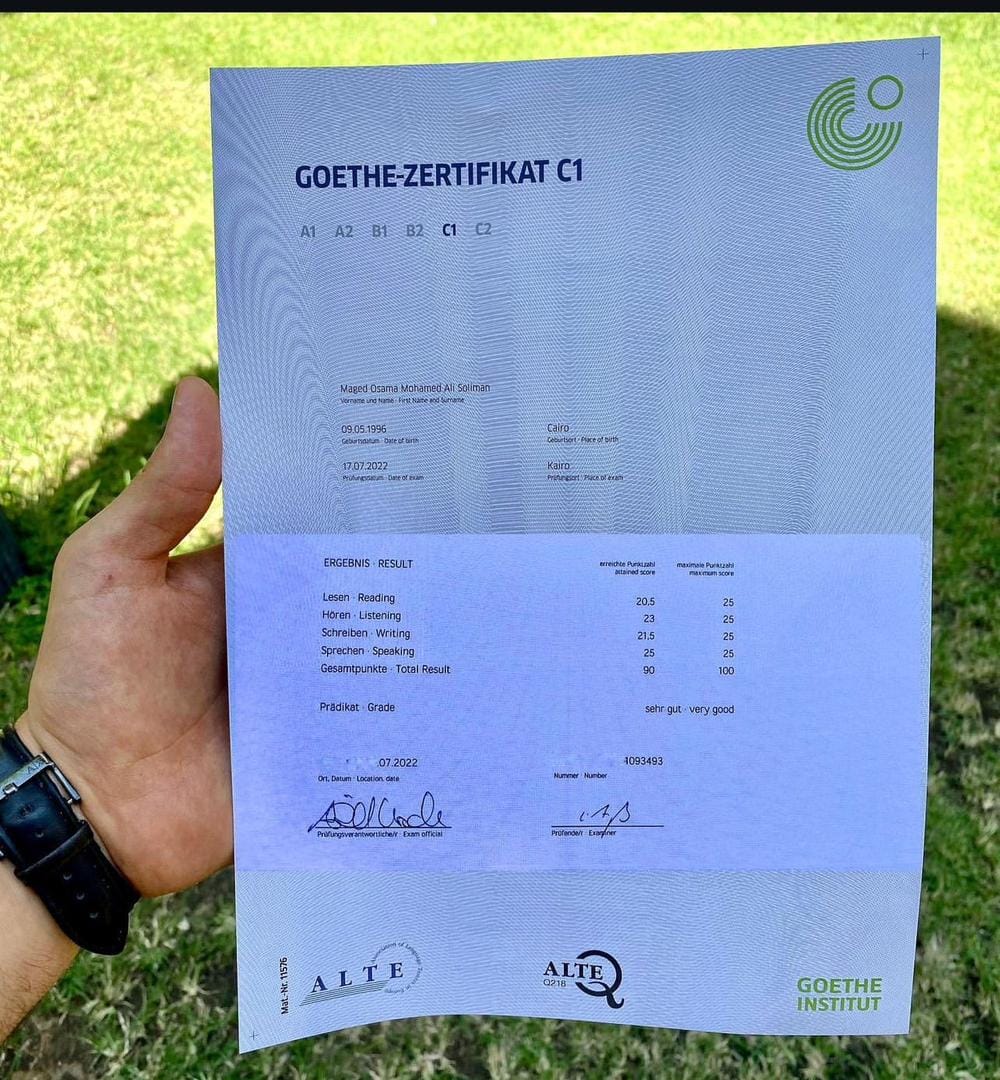How Much Can German Exam ÖSD Experts Make?
페이지 정보

본문
 A Comprehensive Guide to the German Exam ÖSD
A Comprehensive Guide to the German Exam ÖSDAs globalization continues to blur borders, the requirement for multilingual abilities has grown tremendously. For those thinking about finding out German, whether for scholastic, professional, or personal factors, proficiency exams are a necessary criteria. Amongst the most recognized German proficiency tests is the Österreichisches Sprachdiplom deutsch als fremdsprache prüfung (ÖSD)-- otherwise referred to as the Austrian German Language Diploma. This globally recognized accreditation assesses German language skills and opens a variety of chances in education, employment, and beyond.
If you're considering taking the ÖSD exam, this comprehensive guide will provide all the information you require-- covering the structure, benefits, preparation methods, and often asked questions.
 What Is the ÖSD Exam?
What Is the ÖSD Exam?The ÖSD exam is a language efficiency test acknowledged internationally. Developed in Austria and based on the Common European Framework of Reference for Languages (CEFR), it assesses German language abilities throughout multiple levels of proficiency: ÖSD-Zertifikat A1 (novice) to C2 (near-native fluency). While its name highlights Austria, the test covers standard German as spoken in Austria, Germany, and Switzerland, with a focus on real-life language usage.
ÖSD certificates are globally accepted by universities, companies, and federal government companies, making it among the most flexible and trustworthy certifications for German students.
Why Take the ÖSD Exam?
People take the ÖSD exam for many factors, ranging from scholastic aspirations to career advancements. Here are a few of the top inspirations:
Higher Education Admissions: Many universities in German-speaking nations require proof of language efficiency. ÖSD levels such as B2 (for undergraduate studies) and C1 (for graduate studies) typically fulfill these requirements.
Work Opportunities: Employers in German-speaking nations highly worth ÖSD accreditation. Proving your German language abilities can enhance employability and broaden career potential customers.
Immigration and Residency: Some nations in the DACH area (Germany, Austria, Switzerland) may require German language certification for visa or residency authorizations.
Cultural and Social Integration: For those planning to live in German-speaking societies, finding out the language through ÖSD preparation fosters much better combination and interaction.
Personal Achievement: For lots of, the ÖSD is a measure of individual progress and inspiration in mastering the German language.
Structure of the ÖSD Exam
The ÖSD exam is offered in multiple formats depending on the language proficiency level (ösd a1 to C2). Each level is tailored to examine specific skills, such as basic introductions at A1 or complex linguistic jobs at C2. The exam elements usually include:
1. Listening
Participants listen to discussions, statements, or interviews and answer comprehension concerns.
The listening jobs grow progressively challenging at higher levels.
2. Checking out
This part examines the capability to comprehend written texts such as short articles, sales brochures, or emails.
Jobs include checking out for specific details, essences, and comprehensive understanding.
3. Writing
Candidates must produce structured written content such as letters, emails, essays, or reports.
Greater levels focus more on imagination, clearness, and intricacy in composition.
4. Speaking
The speaking sector often involves discussions, presentations, or discussions.
The evaluation determines fluency, pronunciation, grammar, and suitability of language use.
Levels of the ÖSD Exam and Their Purposes
The ÖSD is divided by CEFR proficiency levels, each suited to different goals:
A1 & A2 (Basic User).
Appropriate for beginners finding out basic vocabulary and grammar for daily life.
Often needed for household reunification visas in Austria or Germany.
B1 & B2 (Independent User).
B1 focuses on handling everyday situations, workplace scenarios, and cultural understanding.
B2 enables users to go over complex subjects with fluency and is typically required for scholastic admissions.
C1 & C2 (Proficient User).
C1 accreditation is essential for advanced scholastic or expert goals, such as studying at a university in a German-speaking country.
C2 demonstrates near-native fluency and is often chosen for high-level job positions or specialized occupations.
Tips for Preparing for the ÖSD Exam.
Attaining success in the ÖSD exam requires not just fluency in German however also familiarity with the test format. Here are some ideas to help you excel:.
Comprehend the Exam Structure.
Research study the format, period, and guidelines before taking the exam. Practice sample documents to get comfortable with the test requirements.
Take a German Language Course.
Register in ÖSD preparation courses that specifically train trainees for the exam. These courses guarantee methodical learning suited to the certification level.
Practice Regularly.
Consistency is key when learning a language. Incorporate listening, speaking, reading, and writing into your daily routine.
Immerse Yourself in German.
View German films, listen to German podcasts, sprachzertifikat österreich (mouse click the up coming article) and read German books to enhance your understanding of the language in real-world contexts.
Deal With Weak Areas.
Determine issue locations (e.g., speaking or grammar) and focus on enhancing them through targeted practice and feedback.
Mock Exams.
Take mock tests under exam-like conditions to assess your progress and develop confidence.
Usage Online Resources and Study Materials.
Benefit from complimentary resources, practice tests, and vocabulary-building tools offered online.
FAQs: Frequently Asked Questions About the ÖSD Exam.
1. Is the ÖSD exam only for Austrian German?
No, the ÖSD exam examines standard German and stands for Sprachzertifikat öSterreich German spoken in Austria, Germany, and Switzerland. It stresses real-life language usage, not dialects.
2. How long does the ÖSD certificate stay valid?
ÖSD certificates do not have an expiration date. However, some organizations and companies might require a certificate issued within the last 2-- 3 years.
3. Can I retake the ÖSD exam if I stop working?
Yes, you can retake the exam or particular sections you didn't pass. Retakes can usually be done after a designated waiting duration.
4. What is the passing score for the ÖSD?
The passing rating differs by level however usually needs a minimum of 60% total, with some sections requiring at least 50%.
5. How do I sign up for the test?
You can register for the ÖSD exam through certified ÖSD assessment centers worldwide. Check the official ÖSD website for information on dates and costs.
6. For how long does it take to receive results?
Results are typically available within two to four weeks after finishing the exam. You will get your certificate upon passing.
Secret Takeaways.
The ÖSD exam acts as an entrance to numerous chances for German students. Whether you're intending to study in a German-speaking university, expand your expert horizons, or just challenge yourself, ÖSD certification is a valuable turning point. By comprehending the test structure, dedicating to constant practice, ösd b2 and leveraging available resources, you'll be well-prepared to attain the level of German efficiency you want.
Eventually, mastering German isn't almost passing an exam-- it's about opening doors to cultural enrichment, global communication, and Sprachzertifikat öSterreich individual growth. With the ÖSD, you're one action more detailed to achieving all that and more!
- 이전글20 Resources That'll Make You More Efficient At Foldable Electric Treadmill 25.02.13
- 다음글Does Technology Make Cordless Power Tool Kit Better Or Worse? 25.02.13
댓글목록
등록된 댓글이 없습니다.